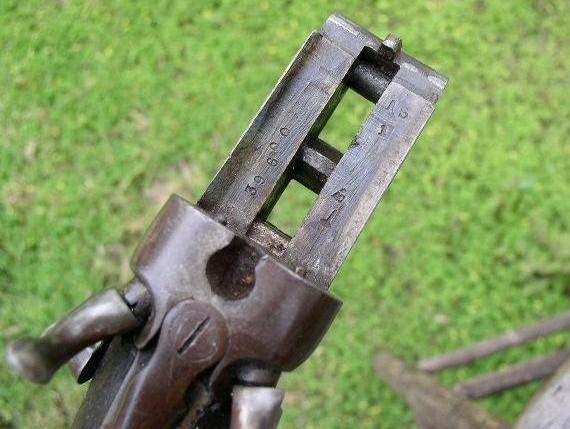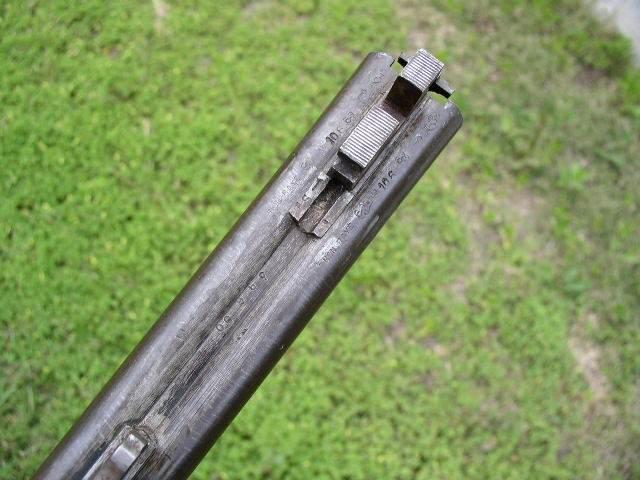Belgian Janssen Sons ---opinions please PICS - 12/28/08 06:19 PM
Hello All - Just signed up and (of course) have a question about a side by side...Made in Belgium pre-1930?, I hope its not rude to post a few photos.
My experience has been with modern shotguns 1930s- 90s... I have little understanding of European made shotguns from the turn of the century era.
Looking through your site I have found some great info in previous posts and links to Belgian sites identifying marks.
The barrel markings were nearly all found through links recommended here.
[img]http://www.flickr.com/photos/7847003@N07/3143764895/[/img]
This 12 Ga Janssen and Sons Co was bought last summer at auction in Iowa by a friend. There were 5 other guns bought that day from a large collection. Some of the others were LeFever 12 Ga, LC Smith 12 Ga, A Fox 10 Ga, and I am not sure the brand of the others. The prices were right...
The Janssen and Sons Co was the only gun that the buyer wanted...
I got the Field Grade Lefever and my Dad got the LC Smith. Both Great serviceable guns that we will be hunting with for many years.
The question is - what does the buyer have exactly... he wants to use this gun in the field with modern loads (NO not Steel)and I am concerned about its ability to withstand a seasons use.
(Yes at some point we will have it taken to a good gun smith) In the mean time can anyone tell a bit more about it from photos.
Is the gun valuable to the point that using it might ruin a desirable piece of history?
The gun is tight - nothing shakes or gives the impression of being mis-aligned. The left Hammer was repaired at some date and is a bit less tight when cocking compared to the right which is like it was when new...great action on both - no catching or play.
The metal on the receiver is fairly coarse (cast?)and is bright for its age. What is this metal? Is it Nickle or Silver?
The look of this metal makes it seem more "hand made" than machined. A few of the screws are hand cut of the same metal although the pins are a hardened steel...
The gun was bought for around $200...
Reciever, Barrel, and Forearm are stamped 66 (or 99)
The Barrel states BELGIAN FINE DAMASCUS
The picture of the Barrel shows the marking well...
Other stampings on the Barrel are a .17EL
and a PJ
Both Barrels have 18.1 stamped in them....
Any opionions would be appreciated - Here are the photos...
[img]http://www.flickr.com/photos/7847003@N07/3143783091/[/img]
[img]http://www.flickr.com/photos/7847003@N07/3143792531/[/img]
[img]http://www.flickr.com/photos/7847003@N07/3144611550/[/img]
[img]http://www.flickr.com/photos/7847003@N07/3143779527/[/img]
[img]http://www.flickr.com/photos/7847003@N07/3144604358/[/img]
[img]http://www.flickr.com/photos/7847003@N07/3143768761/[/img]
[img]http://www.flickr.com/photos/7847003@N07/3144596870/[/img]
My experience has been with modern shotguns 1930s- 90s... I have little understanding of European made shotguns from the turn of the century era.
Looking through your site I have found some great info in previous posts and links to Belgian sites identifying marks.
The barrel markings were nearly all found through links recommended here.
[img]http://www.flickr.com/photos/7847003@N07/3143764895/[/img]
This 12 Ga Janssen and Sons Co was bought last summer at auction in Iowa by a friend. There were 5 other guns bought that day from a large collection. Some of the others were LeFever 12 Ga, LC Smith 12 Ga, A Fox 10 Ga, and I am not sure the brand of the others. The prices were right...
The Janssen and Sons Co was the only gun that the buyer wanted...
I got the Field Grade Lefever and my Dad got the LC Smith. Both Great serviceable guns that we will be hunting with for many years.
The question is - what does the buyer have exactly... he wants to use this gun in the field with modern loads (NO not Steel)and I am concerned about its ability to withstand a seasons use.
(Yes at some point we will have it taken to a good gun smith) In the mean time can anyone tell a bit more about it from photos.
Is the gun valuable to the point that using it might ruin a desirable piece of history?
The gun is tight - nothing shakes or gives the impression of being mis-aligned. The left Hammer was repaired at some date and is a bit less tight when cocking compared to the right which is like it was when new...great action on both - no catching or play.
The metal on the receiver is fairly coarse (cast?)and is bright for its age. What is this metal? Is it Nickle or Silver?
The look of this metal makes it seem more "hand made" than machined. A few of the screws are hand cut of the same metal although the pins are a hardened steel...
The gun was bought for around $200...
Reciever, Barrel, and Forearm are stamped 66 (or 99)
The Barrel states BELGIAN FINE DAMASCUS
The picture of the Barrel shows the marking well...
Other stampings on the Barrel are a .17EL
and a PJ
Both Barrels have 18.1 stamped in them....
Any opionions would be appreciated - Here are the photos...
[img]http://www.flickr.com/photos/7847003@N07/3143783091/[/img]
[img]http://www.flickr.com/photos/7847003@N07/3143792531/[/img]
[img]http://www.flickr.com/photos/7847003@N07/3144611550/[/img]
[img]http://www.flickr.com/photos/7847003@N07/3143779527/[/img]
[img]http://www.flickr.com/photos/7847003@N07/3144604358/[/img]
[img]http://www.flickr.com/photos/7847003@N07/3143768761/[/img]
[img]http://www.flickr.com/photos/7847003@N07/3144596870/[/img]

